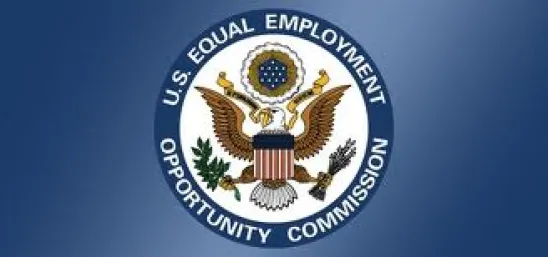There is an old saying in Washington, D.C., that personnel is policy. It is common sense: whoever is in charge of a federal agency or subagency will impart his or her own particular policy preferences on the agency’s priorities, resource allocation, and regulatory agenda. In the current hyper-partisan political environment, where the U.S. Congress has ceded much of the federal policymaking apparatus to the federal agencies, this old saying is even more appropriate. The situation is more complicated, however, when talking about agencies that are helmed by bipartisan boards or commissions. One such agency is the U.S. Equal Employment Opportunity Commission (EEOC), where a continuing Republican majority plays a significant role in policy developments and prevents Democratic members from completely gaining control of the agency.
The Commission
The current EEOC is fully staffed with five commissioners, all of whom were appointed by former president Donald Trump (Chair Charlotte Burrows was first nominated by President Barack Obama in 2014 and then renominated by President Trump in 2019). There are three Republicans: former chair Janet Dhillon, Keith Sonderling, and Andrea Lucas. Dhillon served as chair of the EEOC from May 15, 2019, to January 20, 2021, during which she led initiatives to increase both transparency and compliance assistance (particularly related to COVID-19 matters) at the EEOC. Prior to joining the EEOC in 2019, Dhillon practiced law in the private sector for over 25 years. Commissioners Sonderling and Lucas similarly have significant private sector experience, and Sonderling served as a top official of the U.S. Department of Labor’s Wage and Hour Division. Dhillon’s term does not end until July 1, 2022, while Sonderling’s and Lucas’s terms extend to 2024 and 2025, respectively. This means that the three Republican commissioners will outnumber Democratic commissioners until Dhillon’s term ends on July 1, 2022.
The two Democrats on the EEOC are Chair Burrows and Vice Chair Jocelyn Samuels. Burrows and Samuels are both veterans of the U.S. Department of Justice and worked on Capitol Hill, as well. As chair, Burrows sets the policy agenda, but it is still unclear what this will look like (more on this in part three of our “EEOC Roundup” series). For example, what are Burrows’s plans for the 2017 proposed harassment guidance that has never been finalized? What will happen with employer-sponsored wellness programs, in light of the fact that the EEOC’s recent regulatory proposals addressing such programs were withdrawn? And what about compensation discrimination and wage data collection? Stakeholders are anxious to learn what issues Burrows will prioritize and where the EEOC will head under her leadership.
But while Burrows sets the agenda, actually executing policy initiatives could prove difficult when considering the EEOC’s current political demographics. The EEOC’s authority is primarily derived from the commissioners, and Burrows simply does not have the votes. To be sure, the EEOC and its commissioners are obviously more than just the “D” or “R” following their names, and there are previous examples of commissioner bipartisanship on big ticket items, such as the 2011 regulations implementing the Americans with Disabilities Act Amendments Act and the prescient 2016 report from the Select Task Force on the Study of Harassment in the Workplace. So with a chair setting the policy agenda but lacking the votes, what will this mean? Does this present an opportunity for bipartisanship or more gridlock? Regardless, this “upside down” commission—where the chair and vice chair are in the political minority—will likely be the political situation at the EEOC until at least July 2022.
The General Counsel
The EEOC is also unique in that it does not sit as a tribunal that issues decisions that make policy affecting private-sector employers (this is in contrast to the National Labor Relations Board, which mostly makes policy via adjudication). As such, most private-sector employers feel more of a policy impact through the EEOC’s enforcement authority, specifically the EEOC’s general counsel, as demonstrated by our analysis of the EEOC’s 2020 enforcement statistics. However, the EEOC’s general counsel’s position is currently in flux, creating a level of uncertainty in the current state of enforcement of federal antidiscrimination laws.
This uncertainty is a result of President Joe Biden’s removal of Sharon Fast Gustafson from her position as general counsel (GC) on March 5, 2021. First, there is some question as to the president’s authority to remove Gustafson, whose term would have extended until 2023. Federal law does not indicate that the GC serves at the pleasure of the president. In particular, Title VII of the Civil Rights Act of 1964 states: “There shall be a General Counsel of the Commission appointed by the President, by and with the advice and consent of the Senate, for a term of four years.” Second, President Biden appointed long-time EEOC litigation veteran Gwendolyn Young Reams as the acting general counsel to replace Gustafson. While Reams’s legal acumen and qualifications are unquestioned, it is unknown at this time on which substantive legal areas she will focus. The timing of Reams’s appointment—and how long she might remain in the acting role—could be particularly impactful because the EEOC’s current Strategic Enforcement Plan, which establishes the agency’s “substantive area priorities and set[s] forth strategies to integrate all components of EEOC’s private, public, and federal sector enforcement,” expires this year.
The political makeup of the EEOC and uncertainty at the general counsel position have many employers wondering what to expect from the agency. Fortunately, despite these uncertainties, there are clues as to where the EEOC may be heading. Stay tuned for part three of our EEOC Roundup series, where we will discuss what substantive policies we see potentially emanating from the EEOC in the following months.





 />i
/>i
